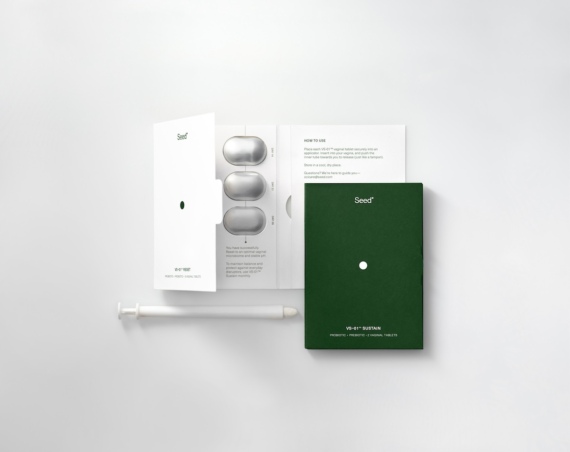Women can struggle with a range of medical conditions, especially those concerning the vagina. The vaginal area can be sensitive, and prone to many medical conditions.
You may have heard of bacterial vaginosis, vaginitis and other conditions before, but you may not have come across ‘vaginismus’ before.

Vaginismus is a vaginal condition that affects up to 1% of the female population, but some studies suggest that around 12-20% of North American women will have suffered from pelvic pain and painful sex through their lifetime.
So, what exactly is vaginismus, what are the signs and symptoms, and how can you tell if you have vaginismus? Let’s find out.
What Exactly Is Vaginismus?
Vaginismus is the term for genital, pelvic pain penetration disorder. What this means is that it can be painful and uncomfortable to go through vaginal penetration, whether this is through the use of sex toys, intercourse, tampons or undergoing a vaginal examination.
Vaginismus is usually an involuntary condition, where the muscles can contract, spasm and cramp on the pelvic floor, making it much more difficult for vaginal penetration, and resulting in pain and discomfort during these times.
This is typically caused by the stimulus. There can be anxiety, or trauma around penetration, which can result in this physical response where the pelvic floor muscles contract in reaction to stimulus or pressure around the vaginal area.
Vaginismus can make sexual intercourse very uncomfortable and not pleasurable, while also making regular checkups and medical examinations very painful to go through.
Vaginismus varies from person to person, and the condition can worsen over time, but it is treatable. In most cases, the correct course of treatment can be very beneficial and effective.
What Causes Vaginismus?
Vaginismus is most often caused by fear or anxiety at the thought of vaginal penetration. The vagina muscles will tense and tighten up involuntarily. This can be caused by trauma after painful sex, childbirth, traumatic events, or other stimulus.
For some women, vaginismus can occur even if they have not experienced painful penetrative sex before. There are no real direct causes, as it is different for everyone.
Some common causes are past painful intercourse experiences, sexual abuse, trauma, and emotional factors that can come into play.
When being diagnosed with vaginismus by a doctor, you may be asked about your medical and sexual history to find the underlying cause of the vaginismus.
It is important to note that having vaginismus is not your fault, and it is involuntary.
Forms Of Vaginismus
There are two forms of vaginismus. These are primary vaginismus and secondary vaginismus. The first, primary vaginismus is also referred to as lifelong vaginismus, where there is pain and discomfort any time the vagina is penetrated in any form.
Women with primary vaginismus may have experienced this for their whole lives, and the condition can make it hard to even attempt to insert a tampon or attempt to have penetrative sex.
The other form is referred to as secondary vaginismus. These are the women who have had penetrative sex in the past, without pain or discomfort. Secondary vaginismus is typically then a result of new medication, a change in circumstances, stress, anxiety, or other conditions that can cause vaginismus.
Signs & Symptoms Of Vaginismus

Vaginismus can vary in severity, but there are some common signs and symptoms to look out for to see if you are suffering from this condition.
For instance, the first sign of vaginismus is painful sex, also referred to as dyspareunia. If sex is very uncomfortable and painful for you, then this is a clear sign of vaginismus.
Sex can sometimes be painful at first, and this pain goes away after penetration is over, but if the pain is continuous, and even occurs after sexual intercourse has taken place, then this can be a sign of vaginismus.
You may feel that the penetrative object such as a sex toy or penis is hitting a wall, and cannot go further. This can be very painful, and you could experience immense pressure, burning, or a stabbing pain. You may also bleed after sexual intercourse.
This pain and discomfort can also occur when using sex devices, tampons or other items that are inserted into the vagina, such as a vaginal ring.
This can also make you fearful of having sexual intercourse, and you can lose interest in sex, or become anxious at the thought of having sexual intercourse.
For some women, tension in the pelvic area, hips, lower back, abdominal muscles, hamstrings, and the pelvic floor muscles can be a sign of vaginismus. You may also experience spasms in these areas, particularly when participating in foreplay.
The symptoms of vaginismus can range from mild to very severe, but most symptoms do not go away without medical treatment or intervention.
If you are unsure if you have vaginismus, it is a good idea to speak to a doctor or medical professional for advice.
What To Do If You Think You Have Vaginismus
If you think that you may have vaginismus, then there are a few steps that you can take. The first step is to stop doing anything that causes you pain. If sexual intercourse is painful for you, then stop having sex while you get treatment.
Many women think that very painful sex is normal, and will continue, but this can only make the vaginismus worse, and you can struggle with the pain. Try to also avoid using tampons or sex toys to not cause any further pain.
Then, you will need to seek support and treatment. It is best to visit a gynecologist or medical professional. Be aware that they will need to examine you to determine the cause and the best course of treatment. While this can be painful, it can help you find the root of the issue.
Make sure that you tell the medical professional about your medical history and sexual history. Don’t be embarrassed, advocate for yourself so that you can get a diagnosis.
Once vaginismus is diagnosed, you may receive a range of treatments from seeing a psychologist or via medication.
A psychologist can help you relax the mind through cognitive behavioral therapy, or with trauma based therapy if that is the cause of the vaginismus.
You may also need to try pelvic floor exercises, and dilators that can be inserted into the vagina. These dilators begin very small, and can help you get used to penetration without pain.
Once you are able to insert the smallest size into the vagina, then you can move up to the next size.
Other treatments include exposure therapy to get you used to physical touch. Being opposed to physical intimacy can be a cause of vaginismus, so you may need to get used to touching a partner without worrying about penetration and the pain that comes with it.
In addition to this, you can try medications for pain, but this is often a last resort. You can reduce the symptoms of vaginismus very successfully with psychology and exposure therapy.
Final Thoughts
To summarize, vaginismus is a vaginal medical condition where sexual intercourse and any other forms of penetration can be very painful and uncomfortable.
This can often be caused by sexual abuse or trauma, emotional issues, and past painful experiences when it comes to penetration.
The important thing is to remain positive, vaginismus is an involuntary condition that can be helped with a range of treatment options. In most cases, vaginismus can be treated with a high success rate.



